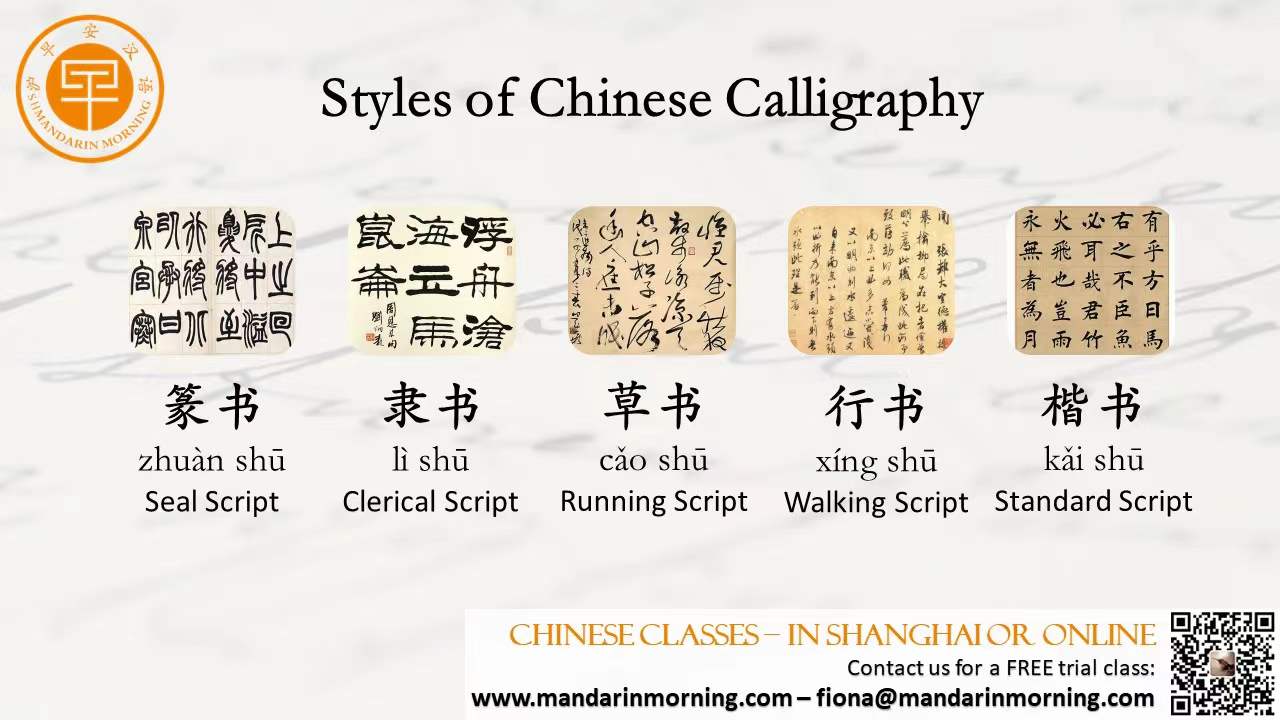There are five basic styles of calligraphy. Each style is very distinct and has developed over the years. Seal Script The first style is Seal Style or Seal Script, also called 篆书 (zhuànshū). Its name comes from the fact that this script was often engraved on stones or seals. This style was created during the Chin Dynasty. These characters are taller than they are wide, often symmetric, with both smoothly curved and straight lines. Stroke thickness stays fairly constant. Because these characters are very structured and the stroke thickness is so steady, this style is often recommended for beginners. Clerical Script The second style is Clerical Script, or 隶书 (lìshū). This style was also using during the Chin Dynasty by government officials. The word itself refers to servitude because this script was used by clerks working in prisons. This style is more efficient, simplifying some of the more complex curves of the Seal Style in favor of sharp bends, squared instead of round. Later, during the Han Dynasty, this style became more popular. This style is also a popular style for beginners to learn, as there aren’t as many strokes to learn. Running Script Next is Running Script, or 草书 (cǎoshū). It was developed during the Han Dynasty. Many great calligraphers used this style. This style is the most abstract and doesn’t require precise strokes like the other styles do. At the same time, it still has its own set of rules. In this script, the calligrapher focuses more on the right side of the character while simplifying the radical on the left. Despite looking messy, this style of calligraphy is very advanced and usually requires mastery of other styles first before attempting it. Walking Script The fourth style is Walking Script, or 行书 (xíngshū). It was formed during the Han Dynasty. This style is a combination of the Running Script, and the last style listed here, the Standard Script. In fact, it can lean closer to either one of the two styles, depending on how the calligrapher chooses to express himself. The Walking Script is smooth and connected, but not as much as the Running Style script. It’s also more simplified than Standard Script. Standard Script Last, but not least is the Standard Script/Style, or 楷书 (kǎishū). This style was invented toward the end of the Han Dynasty and developed more during the Wei Dynasty. This standardized form of calligraphy is defined by its clear and separate strokes and square structure. This script is widespread throughout China. It is generally used in newspapers, textbooks, and government documents. |